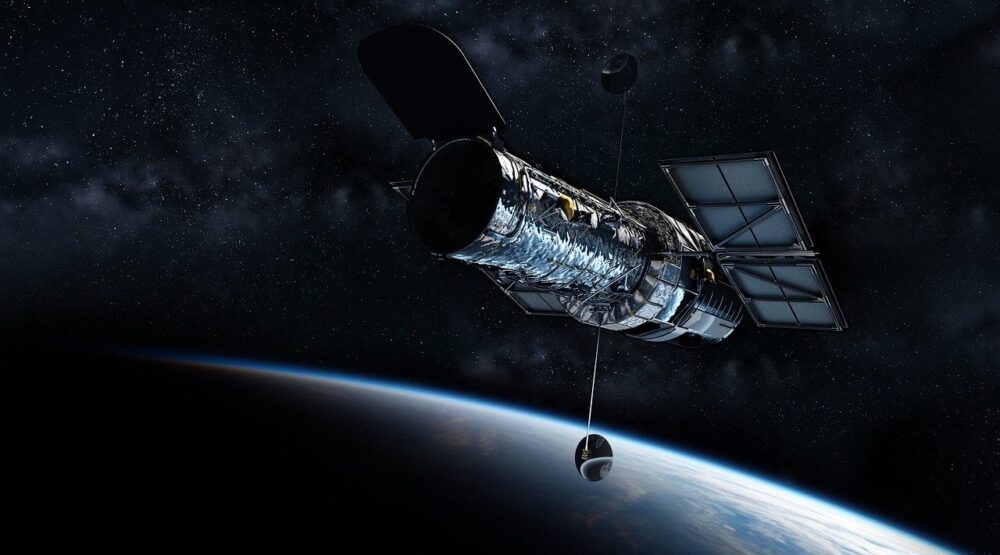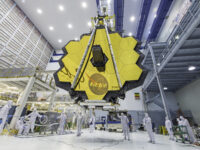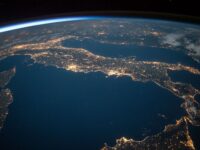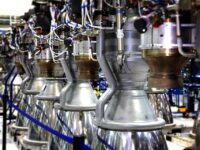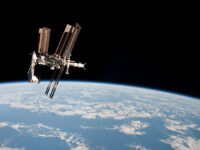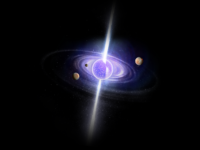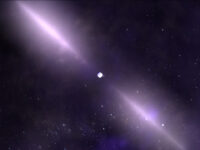Astronomers have looked to telescopes as the most powerful tool for planetary and interstellar observation since their conception in the 17th century. Peering up at the sky from the ground, these telescopes facilitated the discovery of the Solar System planets and their moons, many types of stars, and distant galaxies. But in 1990, one telescope ushered in a new era of astronomy and astrophysics. The Hubble Space Telescope is named after the revolutionary scientist Edwin Hubble, and much like its namesake, the telescope has provided answers to long-held questions about the history of the universe and the laws of physics.
One might ask, what exactly makes the Hubble Space Telescope so different from others that came before it? The answer is in its name; it is among the first space telescopes ever launched and is the largest space observatory. Typically, telescopes prior to the launch of Hubble were built on the Earth’s surface. However, ground-based telescopes are limited by atmospheric interference: shifting pockets of air in the atmosphere scatter starlight, so stars appear to glimmer and twinkle in the sky. By launching a telescope into space, this issue was eliminated, allowing astronomers to capture images which were clearer and more accurate than ever before. Because Hubble observes from outside the atmosphere, it is also able to capture images of space using ultraviolet light (along with infrared and X-ray waves), which are absorbed by Earth’s atmosphere. This allows the detection of objects in space that are invisible from the ground and creates a more comprehensive view of space.
The answer is in its name; it is among the first space telescopes ever launched and is the largest space observatory.
Most recognize the Hubble Space Telescope from its stunning images of stars, nebulae, and the “Hubble Ultra Deep Field.” The Hubble team stared at a “blank” patch of sky for dozens of hours, and instead of nothingness produced an image filled with the farthest galaxies ever seen. These allowed astronomers to get a closer look at stars and their composition; this information finally gave scientists the ability to accurately hypothesize about how these stars formed and how they may interact with their neighbors. As Dr. Julianne Dalcanton recounts in her Nature article “18 Years of Science with the Hubble Space Telescope,” even the smallest of stars, which could only be seen in clusters previously, could be observed individually. These images changed the perception of interstellar objects forever, as they challenged many of astronomers’ previous assumptions about how stars and stellar clusters form.
One of the biggest discoveries the Hubble Telescope has contributed to is providing factors needed to refine the Hubble Constant, which is used to estimate the rate at which the Universe is expanding and, by extension, the age of the universe.
One of the biggest discoveries the Hubble Telescope has contributed to is providing factors needed to refine the Hubble Constant, which is used to estimate the rate at which the Universe is expanding and, by extension, the age of the universe. It was hypothesized by scientists Georges Lemaître and Edwin Hubble that the universe around us is expanding. This concept is known as cosmic expansion, and can be quantified by the formula: v = H₀ * d, where v is the speed at which a galaxy is traveling away from Earth, d is the distance of the galaxy, and H₀ is the Hubble Constant. Hubble obtained this formula by studying the nearby galaxies that Cepheid variable stars were in. It implies that the rate of the overall expansion of the universe is uniform, which is known as the cosmic expansion. The inverse of the Hubble Constant represents the linear time of cosmic expansion and estimates the age of the Universe as approximately 14 billion years. The Hubble Constant can be measured many ways, and not all of these measurements agree. This has called the value of the Hubble Constant into question, and the debate continues to this day. The observation of the Universe’s expansion and age using the Hubble Deep Field was one of the greatest breakthroughs in astronomy. It has allowed scientists to research the causes of the Big Bang, the accuracy of the theory of the Big Bang itself, and the precise value of the Hubble Constant.
Among the first high-resolution space telescopes, it let scientists finally study the intricate composition of the cosmos and appreciate its beauty, including the neighborhoods of stars that live right next door to us.
The creation of the Hubble Space Telescope marked the birth of modern space discoveries. It has allowed us to imagine the unimaginable and see the beauty of celestial bodies. Among the first high-resolution space telescopes, it let scientists finally study the intricate composition of the cosmos and appreciate its beauty, including the neighborhoods of stars that live right next door to us. The Hubble Space Telescope has been a tool used to pioneer discoveries that have served as the foundation for incredible research into the origins of our Universe and how it may change in the future.
Image source: Pixabay
